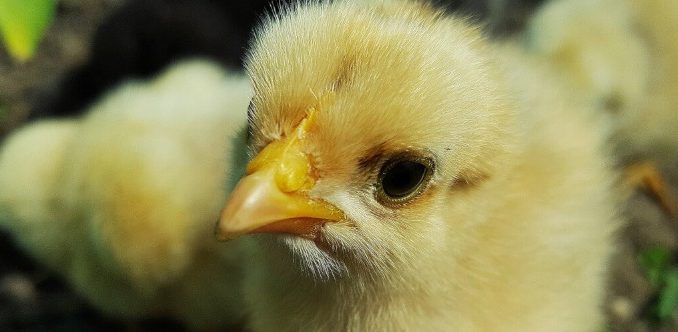
To get a better understanding of how many chickens are killed each year, it’s important to define the different types of the bird. Almost every chicken alive is farmed, with four distinct categories separating them out.
Chicken Varieties Explained
Firstly, there are broilers. Broilers are kept in large sheds from birth and slaughtered after a few weeks for the poultry industry, making it to plates not long after. Broilers can be either male or female birds.
Then there’s egg-layers. Each hen who’s picked to be a layer produces around 300 eggs every year. Once that year is out, the birds are generally exhausted when it comes to egg production. As such, they’re culled around this time. Male chicks make up about half of all chicken births, but have little use in the egg-laying industry. If a male chick is born to a hen at an egg-laying facility, they are promptly slaughtered. The carcasses can then used to produce fertiliser or sold as pet food.
Finally, there are breeders. These types of chicken can be male or female, although the vast majority of the breeder population is female. These breeders are farmed to produce more egg-laying chickens and broilers.
All four classes of chicken are slaughtered after around a year.
How many chickens are there in the world?
Now we’ve established the various types of chicken, we can delve deeper into the numbers. Currently, there are approximately 50 billion chickens alive in the world today. This population includes broilers, egg-layers, male chicks and breeders. Broilers account for the vast majority of this population, with more than 40 billion broilers. Egg-layers account for around 6 billion, while male chicks within the same industry total the same number. Finally, there are tens of millions of breeders to consider. In the United States alone there’s an estimated 60 million of these birds.
Broiler Production
Chickens that are reared for their meat are usually confined to enormous sheds, crammed in alongside tens of thousands of other birds at any one time. Due to this overcrowding, it’s not uncommon for the animal population of poultry farms like these to be addled by diseases. Broilers are often fed supplements to encourage quicker growth for larger yields of meat, although this muscle growth is often out of sync with internal organ growth. As such, broilers often face premature death due to organ failure and heart attacks. Limb deformities are also fairly common, with some broilers becoming crippled due to the fact their legs can’t support their bodyweight to achieve basic locomotion.
Conditions for Laying Hens
Egg-laying chickens are often crammed into cages alongside so many other birds there’s barely enough room to spread their wings. Those that can are in the minority. Although chickens themselves have a tendency toward good levels of hygiene, the often distressing conditions egg-laying hens find themselves in means birds are forced to urinate and defecate on one another. In such close quarters, these birds are also prone to irritability and will regularly peck at one another. To combat injury from this, poultry farmers tend to remove parts of the beak. Once egg production levels drop, birds are shipped to slaughter. However, as the bodies of these birds are generally exhausted and the meat poor quality, the remains of these animals are used in basic foodstuffs like soup, or processed into pet food.
Chicken Meat Production: Some Statistics
By far the biggest producer of chicken meat is the USA, accounting for around a fifth of the overall meat produced in the world. Trailing behind the United States is China, with Brazil close behind in third place. Although they don’t come anywhere near the same levels of output as the big three, other major centres for chicken meat production are Russia, Mexico, India, Iran, Turkey and Argentina.
In Europe, the United Kingdom, Spain, Poland and France produce the largest volumes of chicken meat, with Germany, Italy and the Netherlands trailing slightly behind in output. In total, around 90 million tons of chicken meat is produced globally each year. The largest exporters of poultry in the world are the United States and Brazil, while Hong Kong and China are the biggest importers of chicken meat.
Industrial Farming
Perhaps most worryingly of all, it’s estimated that some 70% of all chicken meat produced in the world is done so within industrial farming systems. This side of the chicken industry is responsible for overcrowding of birds raised for their meat or egg-laying output, as well as the premature death and undue suffering of farmed birds.
Unlike other animals, chickens and birds are not protected by the Humane Slaughter Act, with no legal protection whatsoever afforded to the livestock we continue to consume the most.

Leave a Reply